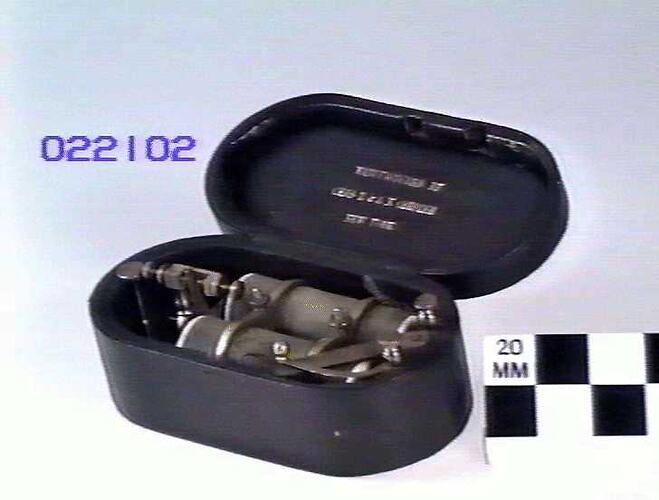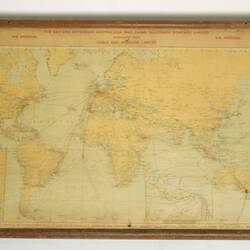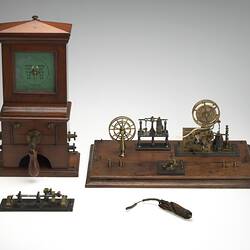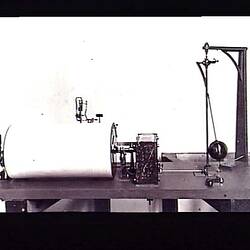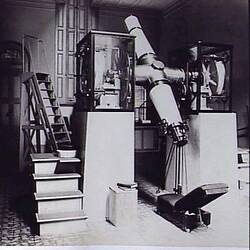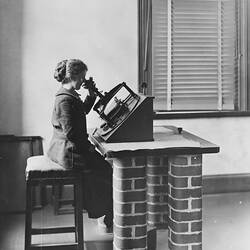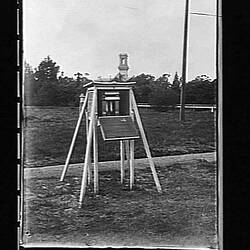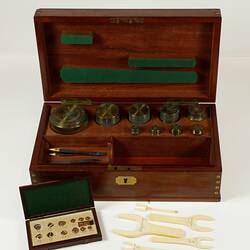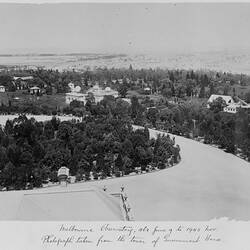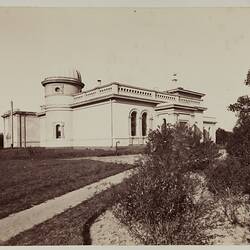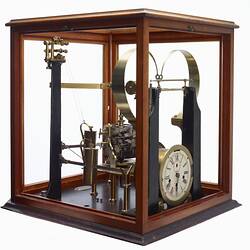Summary
Portable telegraph key and sounder in leather-coverd case. Used by personnel working on telegraph lines in the field to transmit and receive messages.
To transmit signals the operator depressed the flexible brass strip (the key) to complete an electric circuit and transmit current along the telegraph line. Releasing the key broke the circuit and cut off the current. Letters and numbers were represented by a sequence of short and long current pulses, transmitted according to a defined code. The most widely used code was generally known as "Morse code".
When receiving signals, the incoming current pulses energised the coils of the receiving instrument, or "sounder". The operator interpreted the signals by listening to the sounds made by the sounder mechanism.
The key and sounder were made by Charles T. and J. N. Chester, New York, between 1858 and 1871. Used at Melbourne Observatory.
Physical Description
Sounder with horizontal coils on brass base in leather-covered case. Key is flexible brass strip with ebonite knob. Brass components.
More Information
-
Collection Names
-
Collecting Areas
-
Acquisition Information
Transfer from Melbourne Observatory
-
Maker
Mr Charles T. & J. N. Chester, New York, New York State, United States of America, 1858-1871
-
User
Melbourne Observatory, South Yarra, Greater Melbourne, Victoria, Australia, circa 1860s-1880s
-
Inscriptions
Base of sounder engraved: "CHARLES T. AND J. N. CHESTER, NEW YORK 433". Inside of case lid lettered in gold: "MANUFACTURED BY CHAS. T. & J. N. CHESTER NEW YORK"
-
Classification
-
Category
-
Discipline
-
Type of item
-
Overall Dimensions - Closed
157 mm (Length), 80 mm (Width), 70 mm (Height)
-
Overall Dimensions - Open
157 mm (Length), 160 mm (Width), 55 mm (Height)
-
Keywords
